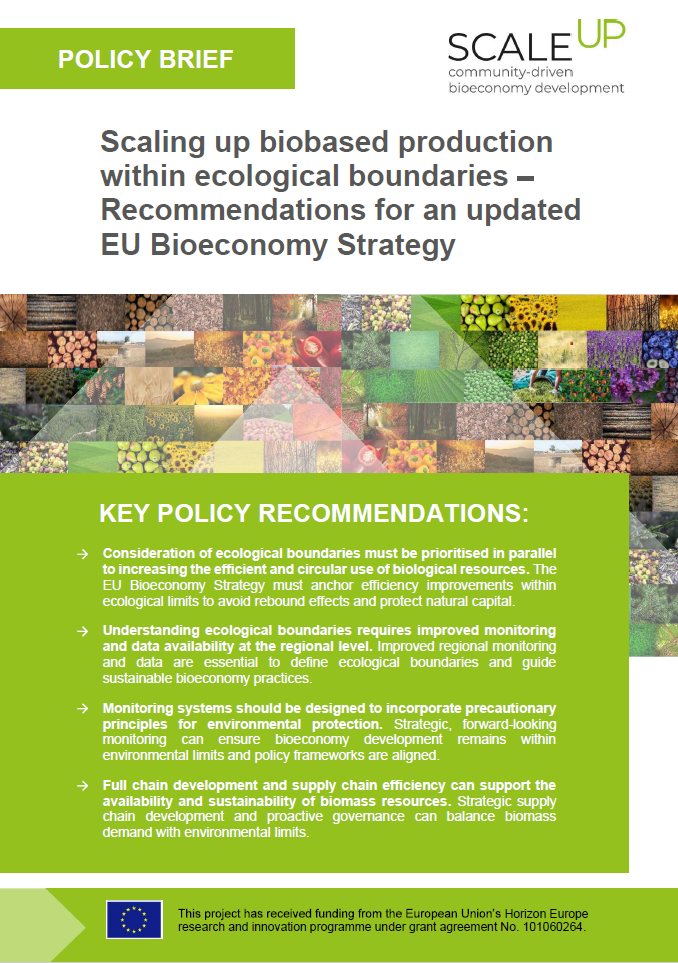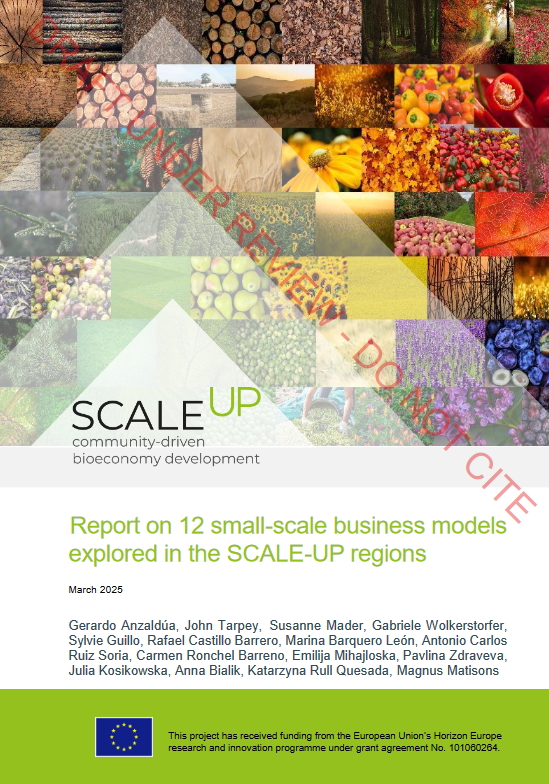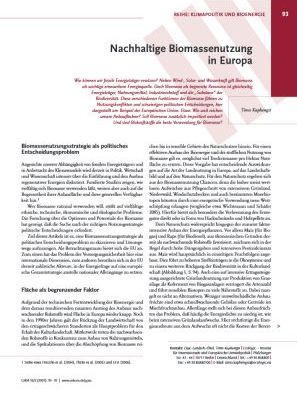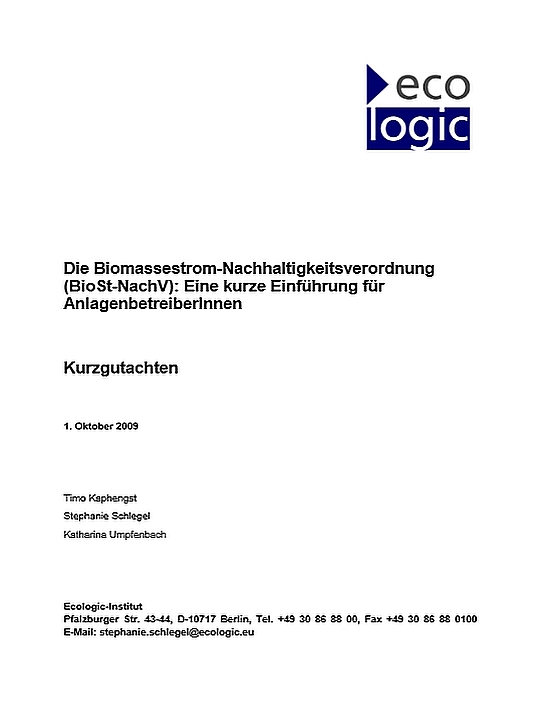© Photo: Sveta Fedarava on Unsplash; Cover: Scale Up Project, 2024
Regional Biomass Availabilities, Nutrient Balances and Ecological Boundaries
- Publication
- Citation
Anzaldúa, Gerardo et al. (2025). Report on regional biomass availabilities, nutrient balances and ecological boundaries (EU Horizon GA no. 101060264), Deliverable D2.1
The Report on Regional Biomass Availabilities, Nutrient Balances and Ecological Boundaries was produced under the EU‐funded SCALE-UP project, which seeks to accelerate community‐driven bioeconomy development across six European regions: Northern Sweden, Mazovia (Poland), the French Atlantic Arc, Upper Austria, Andalusia (Spain), and Strumica (North Macedonia). By gathering local data on agricultural residues and forestry by-products, the report quantifies the quantity and quality of biomass streams available in each region. Simultaneously, it assesses environmental dimensions – such as water quality, soil health, and biodiversity – to establish ecological boundaries beyond which bioeconomic activities could strain natural systems.
A Collaborative, Region-Focused Approach
Under SCALE-UP, each region built a "resource management profile" that overlays biomass availability with ecological considerations. Local stakeholders – including farmers, foresters, and policymakers – provided data at the NUTS3 level (or equivalent), while expert workshops validated findings. The methodology screens how bioeconomic activities (e.g., olive oil production in Andalusia or hemp cultivation in Upper Austria) might affect nutrient cycling and ecosystem health. By combining regional statistics with literature on environmental thresholds, the report ensures that recommendations account for local context, data gaps, and specific land‐use practices. This collaborative framework allows each region to tailor strategies for sustainable biomass use, despite differences in climate, land cover, and economic priorities.
Key Insights: Biomass Resources, Nutrient Recycling, and Ecological Boundaries
This report offers a clear picture of how Europe can balance economic opportunity with environmental stewardship. It highlights where biomass resources are most abundant, proposes nutrient-recycling strategies – such as composting apple pomace in Mazovia or repurposing forestry residues in Northern Sweden – and flags regions where water bodies or soil could become vulnerable. As policymakers and private investors aim to shift from fossil-based systems to circular bioeconomies, understanding the "where," "how much," and "under what conditions" of local biomass is essential. Ultimately, the report lays the groundwork for informed decisions that support rural livelihoods, drive innovation, and protect ecological integrity.









